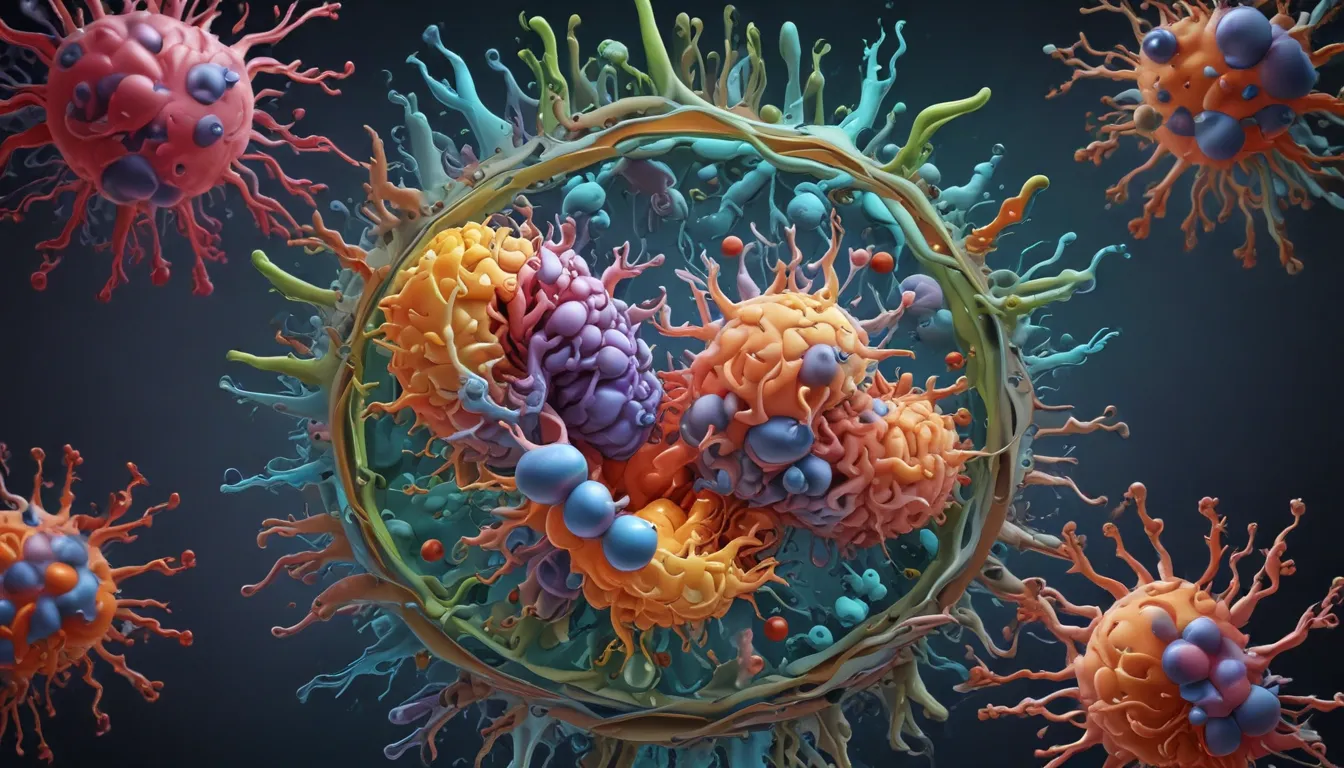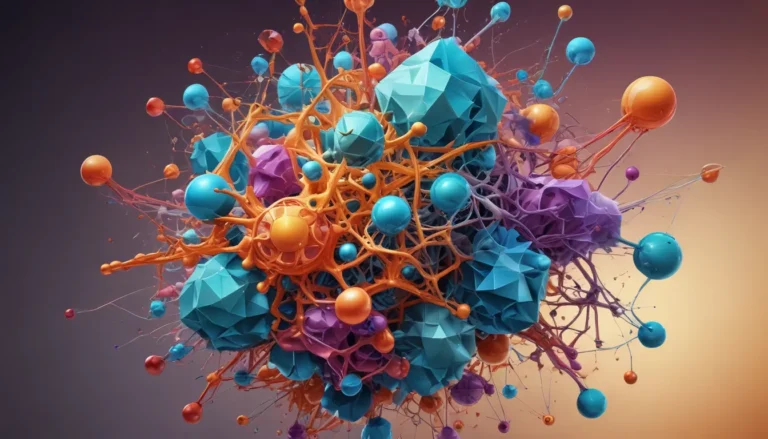A Note About Images: The images used in our articles are for illustration purposes only and may not exactly match the content. They are meant to engage readers, but the text should be relied upon for accurate information.
Enzyme inhibition is a captivating phenomenon that holds the key to understanding essential biological processes and advancing pharmaceutical research. While the notion of inhibition may seem negative, it is a fundamental regulatory mechanism that fine-tunes metabolic pathways and controls cellular functions. In this detailed guide, we will uncover 14 captivating facts about enzyme inhibition that shed light on its significance in various fields, including drug development, disease treatment, and biochemistry research.
The Vital Role of Enzymes in Biochemical Processes
Enzymes are protein molecules that act as catalysts, hastening chemical reactions necessary for various physiological functions such as digestion, metabolism, and DNA replication. These molecular entities play a pivotal role in ensuring that essential processes in the body occur efficiently and effectively.
Understanding Enzyme Inhibition as a Regulatory Mechanism
Enzyme inhibition refers to the process of diminishing or halting the activity of an enzyme. It serves as a crucial regulatory mechanism that helps maintain the delicate balance of biochemical reactions in the body, ensuring that processes occur at the right pace and magnitude.
Exploring the Two Types of Enzyme Inhibition: Competitive and Non-Competitive
- Competitive Inhibition: In this type of inhibition, a molecule similar in structure to the substrate competes with the substrate for the enzyme’s active site, hindering its activity.
- Non-Competitive Inhibition: Here, an inhibitor binds to a different site on the enzyme, inducing a conformational change that impedes substrate binding and enzyme activity.
The Distinction Between Competitive and Non-Competitive Inhibitors
- Competitive Inhibitors: These molecules mimic the substrate’s structure but do not partake in the chemical reaction, effectively blocking the enzyme’s function.
- Non-Competitive Inhibitors: They bind to an allosteric site on the enzyme, triggering a conformational change that reduces enzymatic activity, irrespective of substrate concentration.
Reversible and Irreversible Enzyme Inhibition
- Reversible Inhibition: In this scenario, the inhibitor can bind and unbind from the enzyme, allowing for the restoration of enzyme activity upon removal of the inhibitor.
- Irreversible Inhibition: The inhibitor permanently binds to the enzyme, rendering it inactive, a crucial mechanism in developing long-lasting therapeutic effects.
Enzyme Inhibitors: Natural vs. Synthetic Compounds
- Natural Inhibitors: Some enzyme inhibitors are naturally occurring substances, while others are synthetic compounds engineered to target specific enzymes for therapeutic purposes.
- Synthetic Inhibitors: These compounds are designed with precision to interact with target enzymes, offering potential therapeutic benefits in treating various medical conditions.
The Impact of Enzyme Inhibition on Drug Development
Enzyme inhibition plays a pivotal role in drug development by enabling the creation of targeted therapies that focus on specific enzymes involved in diseases. By inhibiting these enzymes, the progression of diseases can be halted or slowed, offering promising treatment avenues.
Therapeutic Benefits and Adverse Effects of Enzyme Inhibitors
Enzyme inhibitors are deployed in the treatment of conditions such as cancer, hypertension, and HIV, aiding in the regulation of disease-associated processes. However, these inhibitors can also lead to unwanted side effects if they disrupt essential physiological functions.
The Role of Enzyme Inhibition in Medicinal Chemistry
Medicinal chemists extensively study enzyme inhibitors to develop innovative drugs with enhanced efficacy and reduced side effects. By unraveling the intricacies of enzyme inhibition, researchers can design inhibitors that target specific enzymes with precision.
Factors Influencing Enzyme Inhibition
Various factors such as temperature, pH, substrate concentration, and the presence of other molecules can influence enzyme inhibition, modulating the extent of inhibition and its subsequent effects. Understanding these factors aids in fine-tuning enzyme activity.
Enzyme Inhibition and Drug-Drug Interactions
In clinical settings, enzyme inhibition is a crucial consideration when administering multiple drugs simultaneously. This phenomenon can lead to altered drug metabolism and potential interactions, highlighting the importance of understanding enzyme interactions in medical practice.
The Reversibility of Enzyme Inhibition
In reversible enzyme inhibition, the inhibitory effect can be reversed by removing the inhibitor or competitively displacing it with a higher substrate concentration. This reversibility offers flexibility in modulating enzyme activity as needed.
Conclusion: Delving Deeper into the World of Enzyme Inhibition
Enzyme inhibition emerges as a captivating subject that unravels the intricate mechanisms governing biological processes. By comprehensively understanding enzyme inhibition, researchers and healthcare professionals can devise innovative treatments and enhance our knowledge of biochemical interactions. The multifaceted nature of enzyme inhibition creates a window into the intricate world of molecular interactions, offering exciting possibilities for future advancements in various fields.
Frequently Asked Questions
- What is enzyme inhibition? Enzyme inhibition is a process where the activity of an enzyme is reduced or blocked by an inhibitor molecule.
- What are the different types of enzyme inhibition? The types include competitive, non-competitive, uncompetitive, reversible, and irreversible inhibition.
- How does competitive inhibition work? Competitive inhibitors compete with the substrate for the enzyme’s active site, reducing its activity.
- What is non-competitive inhibition? Non-competitive inhibitors bind to a different site on the enzyme, inducing a conformational change that reduces enzyme activity.
- Can enzyme inhibition be reversible? Yes, enzyme inhibition can be reversed in reversible inhibition scenarios.
- What are irreversible inhibitors? Irreversible inhibitors tightly bind to the enzyme, permanently blocking its activity.
- How is enzyme inhibition relevant in medicine? Understanding enzyme inhibition aids in developing targeted therapies for diseases.
- Are all enzyme inhibitors harmful? No, some inhibitors have therapeutic benefits and are used intentionally for medical purposes.
- Can enzyme inhibition occur naturally? Yes, enzyme inhibition can occur naturally in organisms.
- What future developments can be expected in enzyme inhibition research? Researchers anticipate discovering novel inhibitors, understanding intricate inhibition mechanisms, and applying this knowledge across various disciplines.
Enzyme inhibition unveils a captivating realm of scientific exploration with endless possibilities. By delving into the complexities of inhibition mechanisms, you can gain a profound understanding of the intricate molecular interactions shaping our biological world. Explore further to uncover the enigmatic facets of enzyme inhibition and expand your knowledge in the realm of biochemical processes.






